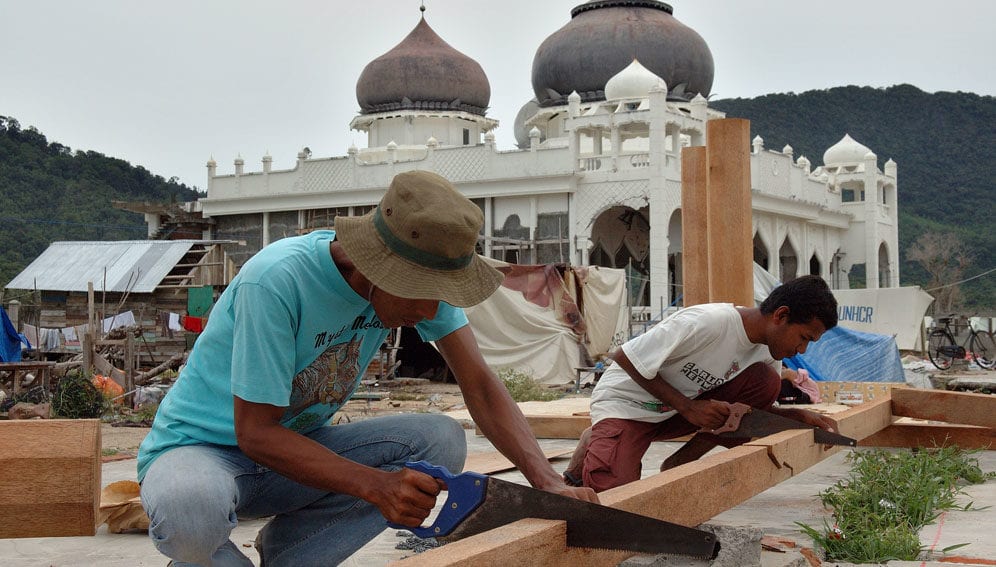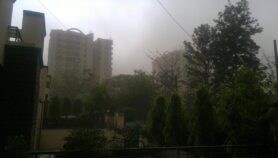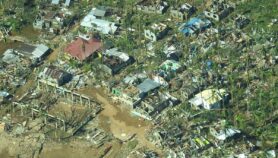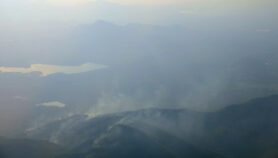06/10/18
Indonesia caught unprepared for tsunami

Send to a friend
The details you provide on this page will not be used to send unsolicited email, and will not be sold to a 3rd party. See privacy policy.
[JAKARTA] Indonesia’s meteorological and geophysical agency, commonly known as BMKG, is under fire for “ending” prematurely a tsunami warning minutes after giant waves crashed onto the cities of Palu and Donggala, leaving almost 1,600 people dead as of this writing (5 October).
Indonesia, which took the brunt of the 2004 Asian tsunami, suffering over 150,000 casualties and heavy economic losses, had since upgraded its warning systems. But these were of no avail in the 28 September earthquake and tsunami that hit Sulawesi island.
“I decided to end the warning because the data showed us that the tsunami has subsided in the city of Palu. I thought it was the time for people to immediately help and evacuate the dying victims”
Rahmat Triyono, BMKG
The Indonesian tsunami early warning system operated by BMKG released an alert five minutes after a 7.4 magnitude earthquake hit central Sulawesi but called it off 29 minutes later, raising questions about the country’s early warning systems. Based on the guidelines of Indonesian tsunami early warning system InaTEWS, BMKG should have waited for at least two hours.
“I decided to end the warning because the data showed us that the tsunami has subsided in the city of Palu. I thought it was the time for people to immediately help and evacuate the dying victims,” said Rahmat Triyono in a phone interview with SciDev.Net.
Triyono, who heads the tsunami and earthquake centre at BMKG in Jakarta, justified his decision by saying that the sea level rise in Mamuju, located 300 kilometres away from the quake epicentre, was only six centimetres, leading him to assume that the tsunami in Palu had tempered.
According to Triyono, the two-hour rule applied to situations where no data was available to confirm a tsunami. ‘We have data from Mamuju, why do we have to wait? He also said that InaTEWS guidelines are not a “holy book” which cannot be changed. Since the Indian Ocean tsunami in 2004, BMKG has released a number of tsunami warnings from the InaTEWS system.
“There were times when we had waited for two hours but no tsunami happened and we were criticised for inaccurate warnings,” said Triyono. “Besides, most Indonesian tsunamis are local tsunamis which arrive 10-60 minutes after an earthquake,” he said.
But Abdul Muhari, a tsunami science expert at Indonesia’s Ministry of Marine Affairs and Fisheries, says there is scientific basis for the two-hour rule. “A tsunami is a series of waves. Based on the data from previous tsunamis around the world, two hours is the safe threshold. BMKG still made a wrong decision,” he said in an interview with SciDev.Net.
Jason Patton, geophysicist and lecturer at Humboldt State University, California, backs Muhari’s statement. “A tsunami can have a time duration longer than two hours, especially if the geometry of the ocean basin is shaped to resonate or prolong the time during which the tsunami exists.”On 3 October, Indonesian lawmakers summoned Triyono and other BMKG top officials to explain in the House of Representatives their decision to withdraw the tsunami warning too early.
But both Patton and Muhari thought it was likely that the people in Palu and Donggala never received the warning anyway as electricity and the communication networks had collapsed. Also, the beaches did not have warning sirens.
According to Patton, the tsunami was a local one caused by underwater landslides triggered by the earthquake, exactly the type of tsunami that is often too close for warnings to be effective. In Palu, the tsunami made landfall 8—11 minutes after the quake, giving people little time to evacuate.
“Even if the tsunami early warning system was in place, it probably would not have helped the people in Sulawesi,” Patton says.
This piece was produced by SciDev.Net’s Asia & Pacific desk.













